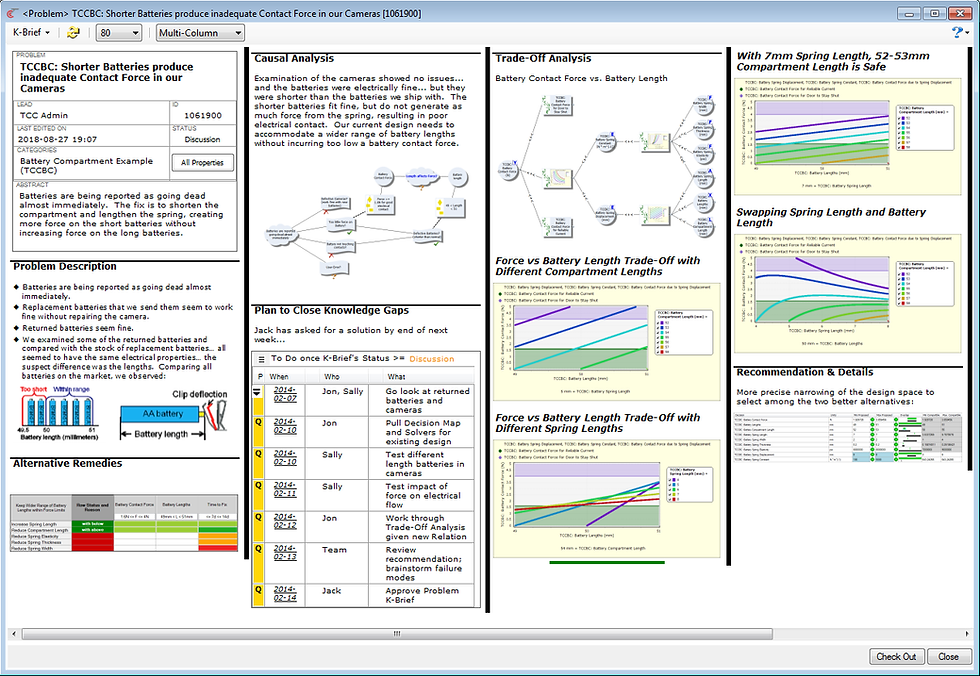Key Terminology
k-brief (knowledge brief)
Images:
Examples of k-briefs:
See also:
The related terms "visual model" and "LAMDA".
The only k-brief software complete with visual modeling capabilities designed to enable set-based and LAMDA practices can be found here.
References:
The first three books on the k-brief / A3 and associated practices were all published in 2008:
J. Shook, Managing to learn, The Lean Enterprise Institute, Cambridge MA, 2008.
D.K. Sobek II, A. Smalley, Understanding A3 thinking: A critical component of Toyota's PDCA management system, Productivity Press, Taylor & Francis Group, 2008.
M. Kennedy, K. Harmon, E. Minnock, Ready, set, dominate Implement Toyota's set-based learning for developing products, Oaklea Press, 2008.
Those k-brief practices were further detailed out in this book:
P.W. Cloft, M.N. Kennedy, and B.M. Kennedy, Success is Assured: Satisfy your customers on time and on budget by optimizing decisions collaboratively using reusable visual models, Productivity Press, Taylor and Francis Group, 2019. (see SuccessIsAssured.com)
Origins of the Term: the original term adopted for k-briefs was "A3", which is simply the size of paper that many of them were restricted to (since that was the largest that could be faxed to other Toyota locations at the time). Since that size of paper is not really the point (and often the wrong size to use depending upon the topic), Targeted Convergence Corporation decided in its training material and software to rename "A3" to a term with similar ring to it "k-brief" which more accurately reflected the real intent and point of the tool. Others have since adopted the term, though many continue to use "A3".
Definition: a collection of visual models with text explaining how those visual models together facilitate the collaborative discussion that is the objective of that particular K-Brief. The "visual models" in that definition tie to the “M” and the "collaborative discussion" ties to the "D" in the ‘LAMDA’ mnemonic that Dr. Allen Ward coined for Toyota’s key learning behaviors. Learning oriented k-briefs will tend to call for "Look", "Ask", and "Act" of LAMDA as well. Similarly, they tend to call for the Plan-Do-Check-Act elements of PDCA continuous improvement. Note that the k-brief is not intended to be a report on what was done; it is intended to be a tool for getting that learning, problem-solving, decision-making, or similar collaborative knowledge work done efficiently and effectively, and allowing that to be efficiently reviewed by other experts or interested parties.
Origins of the Practice: the use of k-briefs / A3's and the associated practices were in place in the 1980's and 90's, but had been evolving through Toyota's continuous improvement system for decades prior.

